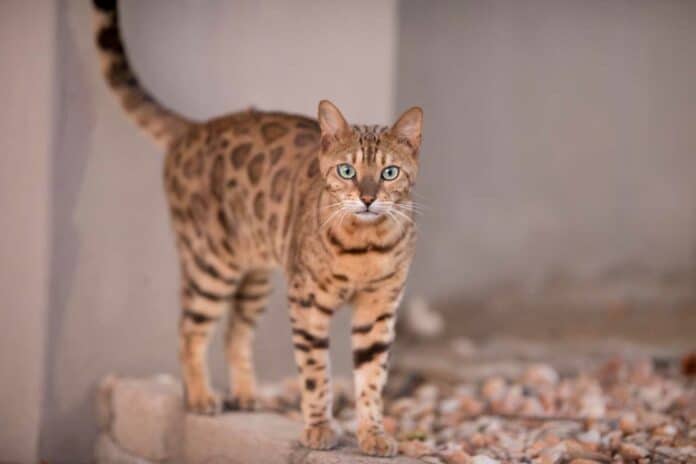Bengal cats are prized for their remarkable looks, which mimic those of little jungle cats with spotted and marbled coats. It was widely accepted that the genes responsible for these distinctive characteristics came from domestic cats crossed with Asian leopard cats. Nevertheless, studies carried out by Stanford Medicine in association with Bengal cat breeders have shown that specific coat patterns have a less exotic origin.
The study discovered that genes from domestic cats are responsible for Bengal cats’ iridescent sheen and leopard-like patterns. After mating with wild cats, these genes from domestic cats were actively selected, giving Bengal cats their current unique look.
For this study, scientists analyzed genes collected from nearly 1,000 Bengal cats over 15 years. The results not only shed light on the genetic origins of Bengal cats’ coats but also advance our knowledge of how heredity affects appearance. By elucidating the genetic processes underlying the unique coat patterns of Bengal cats, scientists acquire essential insights into how multiple genes combine to generate an array of colors, patterns, and physical attributes in animals.
Scientists studied the genetics of physical features using cats and other animals. Previous studies suggest the genes responsible for the color coat variation in tabby cats and the unique markings of the Abyssinian cat.
Gregory Barsh, MD, PhD, an emeritus professor of genetics, said, “The big-picture question is how genetic variation leads to variation in appearance. This is a question that has all kinds of implications for different species, but we think that cats offer an especially tractable way to study it.”
According to the Stanford Medicine team’s original hypothesis, Bengal cats may provide information on the genetics of wild cat colors and patterns. But after examining the genomes of 947 Bengal cats, they discovered something unexpected: None of the genomes contained parts of the wild Asian leopard cat genomes.
“Nearly every Bengal cat breeder and owner has this idea that the distinctive look of the domestic Bengal cat must have come from leopard cats,” Barsh said. “Our work suggests that’s not the case.”
Instead, the researchers discovered that genetic variants already existing in domestic cats were responsible for the unique appearance of Bengal cats. Interestingly, when examining the “glitter” trait—Bengali cats with silky, golden-colored fur—they discovered that the cause was a mutation in the Fgfr2 gene. This mutation is specific to Bengal cats and was not brought about by leopard cats but rather by domestic cats. Furthermore, the Fgfr2 mutation lowers the activity of the encoded protein, providing information about how minute alterations in genes might impact physical characteristics.
Finally, scientists analyzed the genetics of “charcoal” Bengals, a rare subset of the breed with darker coloring.
The researchers at Stanford Medicine found that a gene linked to charcoal coloration in leopard cats is only functional when paired with the genome of a domestic cat because of genetic incompatibility. This phenomenon provides insight into the coexistence and functionality of DNA from distantly related species in common companion animals such as Bengal cats.
In addition to helping breeders understand Bengal cat characteristics, their study has made it easier for them to work with groups that support Bengal cats, enabling them to improve breeding methods based on genetic information.
The scientists stress the effectiveness of artificial selection, pointing out that Bengal cat coat diversity might have been attained without the help of Asian leopard cats. Scientists from the University of Bern, Texas A&M University, Gencove Inc., and the HudsonAlpha Institute of Biotechnology participated in the study.
Journal Reference:
- Christopher B, Kaelin, Kelly A, Mcgowan et al.. Ancestry dynamics and trait selection in a designer cat breed. Current Biology. DOI: 10.1016/j.cub.2024.02.075
